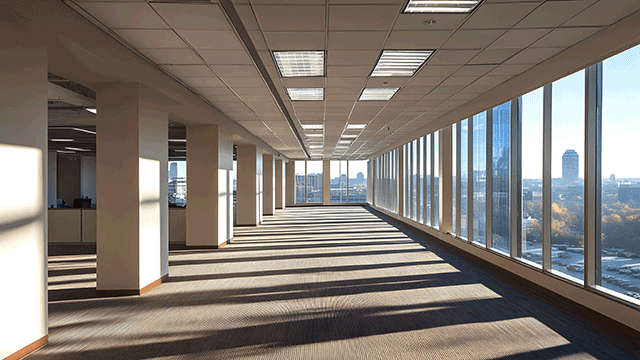COMMENT Some numbers to set the scene: 260,000 – the number of long-term empty residential units in England today; 170,000 – the number of empty business/commercial premises that are privately owned in England right now, equating to well over 100m sq ft; 15 – the number of years we have been delivering PDR for social and affordable housing; 10,000 – the number of tenants we have housed in that time
Permitted development rights (PDR) have been openly discussed as a way to combat the supply of housing, having received a boost following the introduction of Flexible Use Class E under the Conservative government in 2022.
Although little practical has been done on this specific measure by the new Labour government to date, common sense tells us that to meet such ambitious housing targets and affordable housing tariffs, PDR must play a part. The problem for many is it’s not sexy stuff. But as a seasoned investor in both affordable/social housing and PDR, there are a lot of positives, and lessons learnt. These can and should be shared.
Misplaced concerns
PDR homes are often criticised for being too small. Co-living units can be as small as 15 sq m and go up to about 20 sq m, while PDR units in our portfolio go up to 70 sq m. Worries about aging stock being inefficient are also misplaced. Having invested in various green initiatives across our portfolio of 1960s buildings, we have achieved EPCs of B – it can be done.
As for the common stereotype of such homes being ugly and poorly designed – keeping the structure of a 1960s office block is not going to win any Stirling awards – it’s much better to retain and convert from a sustainability point of view than demolish and rebuild. Besides, the interiors are what really count and many PDR schemes can and should replicate BTR design with communal areas, amenities and flexible accommodation.
Some will have concerns over anti-social behaviour. Any large-scale form of housing will see some anti-social behaviour. However, as long as there is adequate security in place 24/7 and issues are dealt with swiftly, like in all schemes, then affordable housing via PDR should be no greater risk of this than private housing. It’s time to change the stigma and focus on the positives of housing people who need it the most.
And these can be family homes too. Local authorities are the decision makers when it comes to placing people into social housing. Providers are just informed who are being placed. If a family is placed in a studio apartment that’s clearly not ideal. The decision making needs to be better at local level to ensure that the right accommodation is matched, wherever possible. However, it’s not always possible and a secure roof over a family’s head should always take priority over the alternative.
Off the streets
The reality is, we have an opportunity to turn disused buildings into quality homes quickly, effectively and efficiently – saving cost, time and carbon. Quickly, because converting a disused office scheme into residential means a permission in 12 weeks rather than the reported average of 26 weeks – but in practice mostly over a year at present – reducing costs at the same time Efficiently, because 50-70% of carbon can be saved by repurposing and converting buildings than demolition and build. Effectively, because the government saves huge amounts of money by using high quality but affordable rental accommodation rather than paying for temporary accommodation.
This is the most viable way to deliver on targets, to get people off the streets, off waiting lists and reduce balance sheets. They may not win the Turner prize in terms of overall appearance, but they serve a very real and urgent purpose. I hate people being on the streets, not seeing much-needed homes for them. It’s time we turned the stigma around and work together to solve this crisis.
Image © Adobe Stock
Richard Hughes is a senior associate at Forsters











